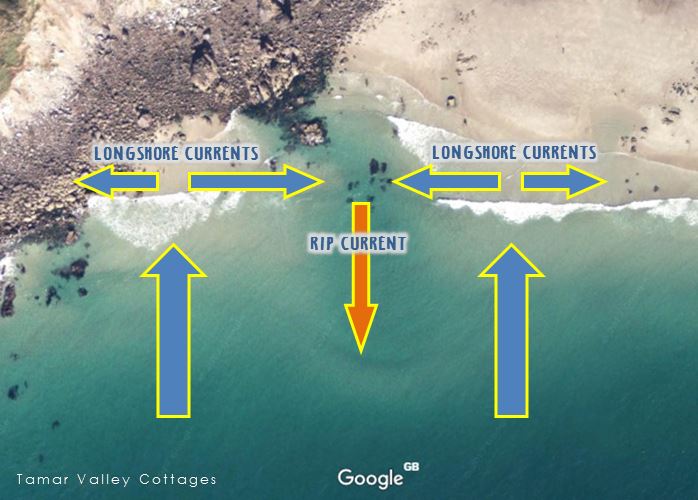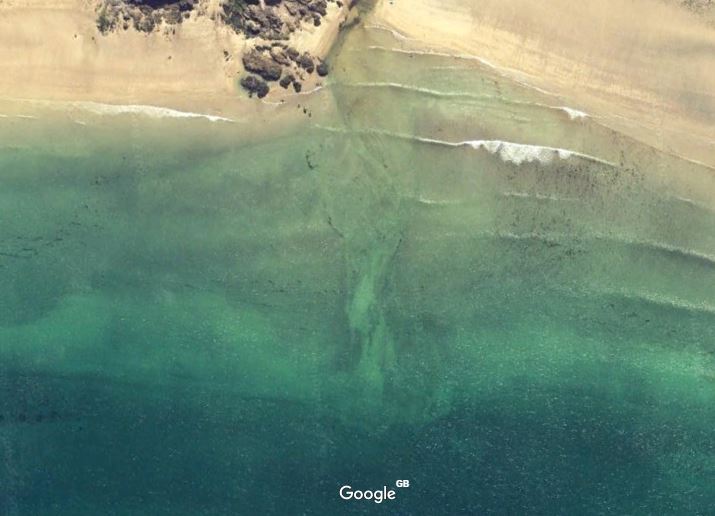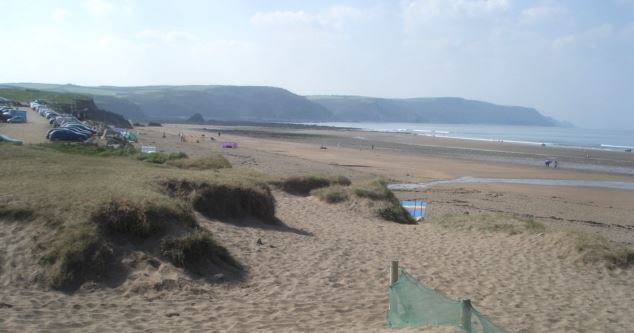As we now enter summer, more and more of us will be donning our bathers and heading into the bracing bite of the Atlantic. Thankfully, accidents are relatively rare, but one particular hazard remains a constant threat and sadly has taken many lives – the rip current, often known as a riptide or undertow. In this blog post, we describe what a rip current is, how to spot it, and how to escape it.

What is a rip current?
Most days on most beaches, the waves roll in at a bit of angle. This means that the water is constantly pushed in one direction, and rip currents are relatively rare.
However, sometimes the waves hit the beach face-on. When this happens, some of the currents push left and right and create what is known as a long-shore current (running parralel to the shore). When two of these meet at the same point, or when one hits an obstacle like a jetty of rocky outrop, they turn back out to sea forming a powerful rip current.
A rip current isn’t a downward suction. It is simply a strong current that will take even the best swimmers further out to sea.

How do I spot a rip current?
Be warned that few rip currents exhibit all of the following traits, and some can exhibit none. However, these are useful guidelines to keep in mind:
- Fewer breaking waves – the most common feature of a rip current is the lack of breaking waves. If you see a strange flatter patch of water, with waves either side, it could signal a rip below the surface. The surface could also be unusually rippled and look different to the surrounding sea.
- Darker coloured water – the strong forces of a rip current can dig out a deeper channel in the sand, and rip currents naturally look for the path of least resistance.
- Dirty, foamy or sandy water – it’s not just swimmers that rip currents pull out to sea. The strong currents dredge up sand and other matter, so if you see a patch of muddy or discoloured water, with foam heading out to sea, that could well be a rip current.
- Obstacles pointing out to sea – features like jetties, sand banks, or rocky outcrops catch longshore currents and turn them out to sea causing a rip current to form.
Click here to view a photo gallery of rip currents (external site)
How do I escape a rip current?
- Swim in lifeguarded areas – the RNLI look out for rip currents, and on lifeguarded beaches they will position red and yellow flags to let you know where it’s safe to swim. Never swim where there is a solid red flag, or where there is a black and white flag (intended for non-powered sea-craft including surfboards).
- Feet down – if you’re still in shallow water and the rip isn’t too strong, you may be able to dig your feet into the sand. Walk sideways until you feel the rip current weaken.
- Swim across, not against – if you are caught by a rip current, you will realise that you are floating further away from the shore. Do not try to swim directly back to the beach. Most fatalities from rip currents are young men who are strong swimmers. Swimming against the current will wear you out. Instead, swim across the current, along the beach. Most rip currents are 30 metres wide at the very most, so it shouldn’t take too long.

Please bear these tips in mind, and be sensible when you swim – always supervise children, use lifeguarded beaches, and never swim alone or under the influence of alcohol. That way, you can enjoy our wonderful water in safety.
Do you have any other tips? Let us know in the comments below!


